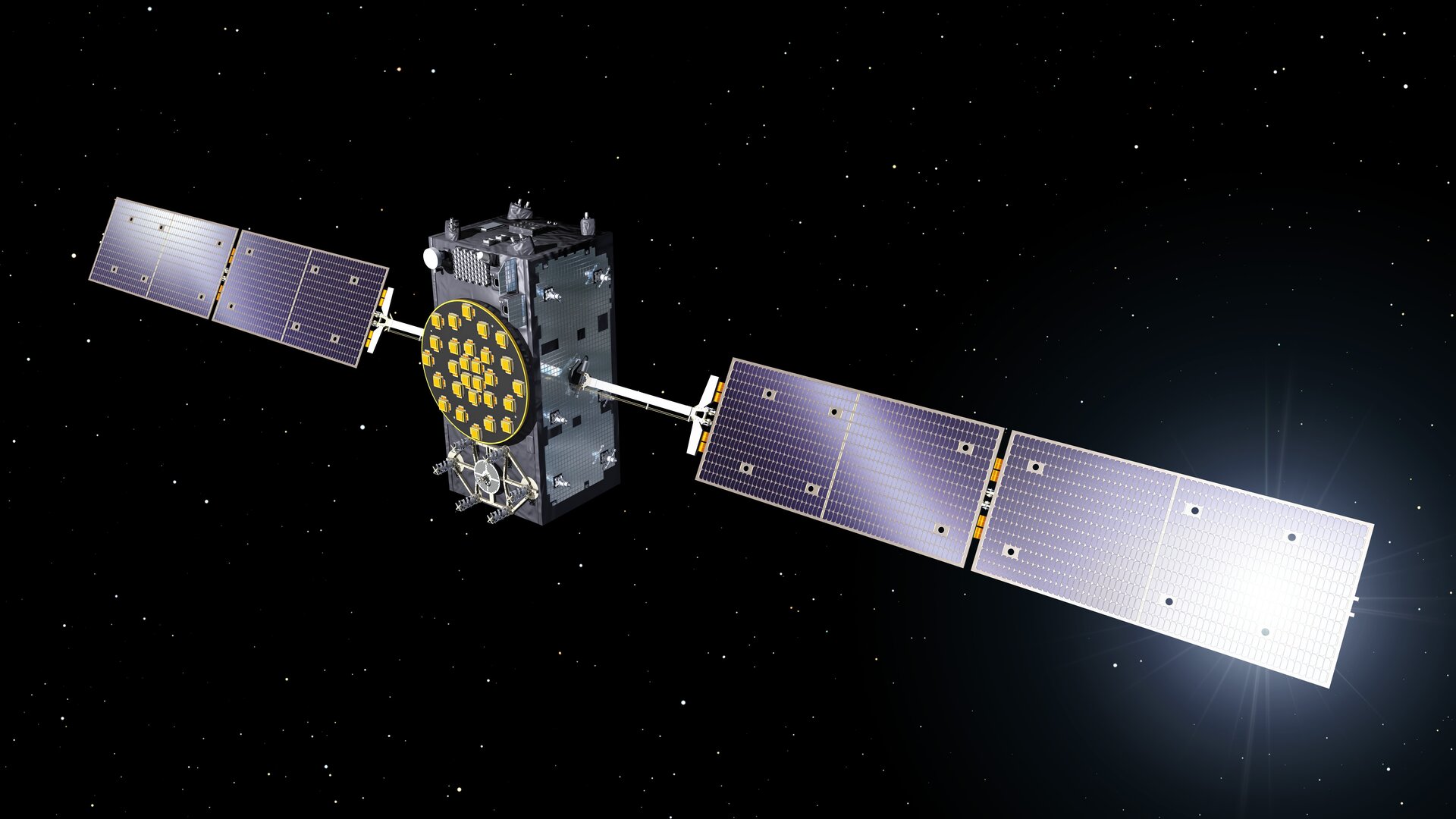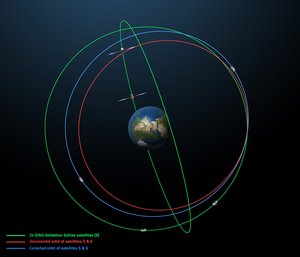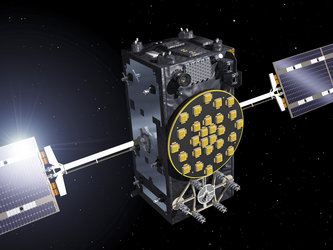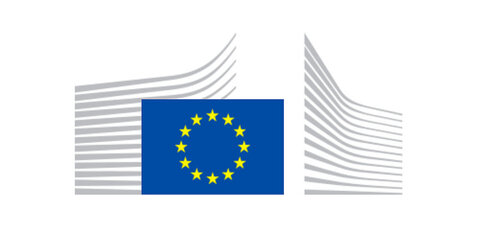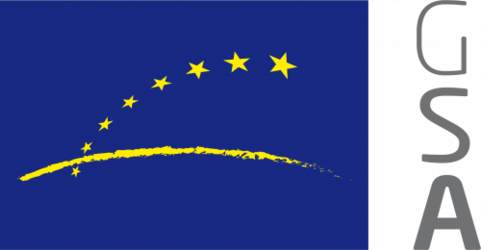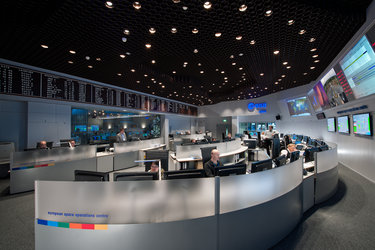Galileo satellites well on way to working orbit
Their systems performing well, Europe’s recently launched Galileo navigation satellites have carried out a set of manoeuvres that will take them down to their working positions in orbit.
On 27 March, the seventh and eighth Galileo satellites were launched together on a Soyuz launcher into a circular 23 522 km altitude orbit.
This was about 300 km above their final orbit. As is standard for nearly all space missions, the satellites themselves are then tasked to manoeuvre themselves precisely into their set positions using their onboard thrusters.
This is especially important for navigation satellites like Galileo, where the precision of their orbits is an essential element of their functioning.
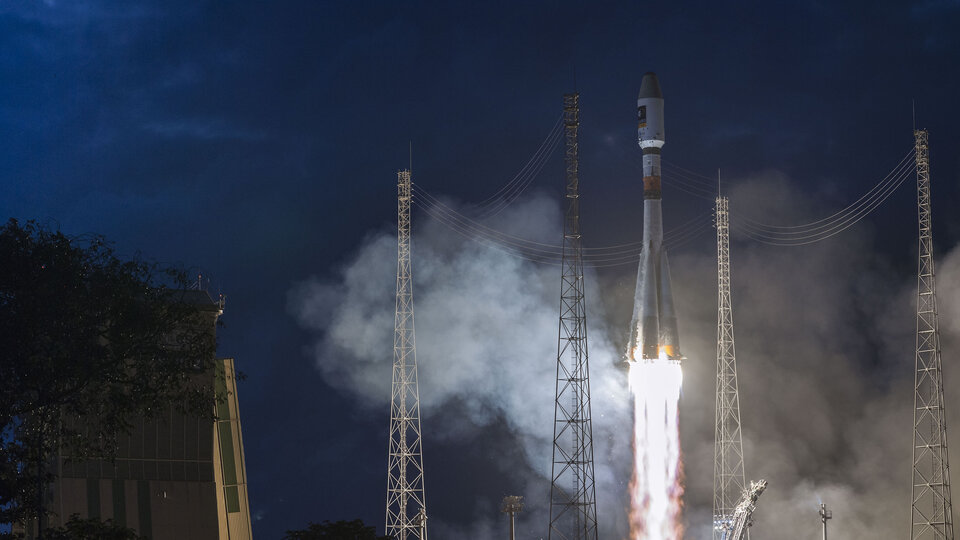
User receivers on the ground derive their position from the time it takes for navigation signals from space to reach them – so just as the Galileo satellites’ onboard atomic clocks are kept accurate down to a few billionths of a second, their orbital position must be known to a matter of centimetres.
The two Galileo satellites have performed all their ‘LEOP’ manoeuvres, so-called because they are overseen by their Launch and Early Operations Phase (LEOP) team, based – for this LEOP – at the Toulouse site of French space agency CNES.
These manoeuvrings began as soon as the automatic initialisation sequence of the satellites was completed. A joint team of ESA and CNES personnel oversaw the LEOP process from Toulouse.
ESA/CNES team brings satellites through LEOP
They spent the morning of 28 March ensuring that the two satellites’ solar arrays deployed correctly and then pointed towards the Sun – so they could switch from relying on their onboard batteries to limitless solar power.
Next came the gradual switch-on of the satellites’ various systems, checking everything was working as planned after the launch; finally the spacecraft were in operation in their nominal mode.
Their thrusters were fired at precisely timed intervals, for a few minutes at a time. Each manoeuvre is followed up by detailed orbital determinations, to make sure that the satellites have followed their planned trajectories.
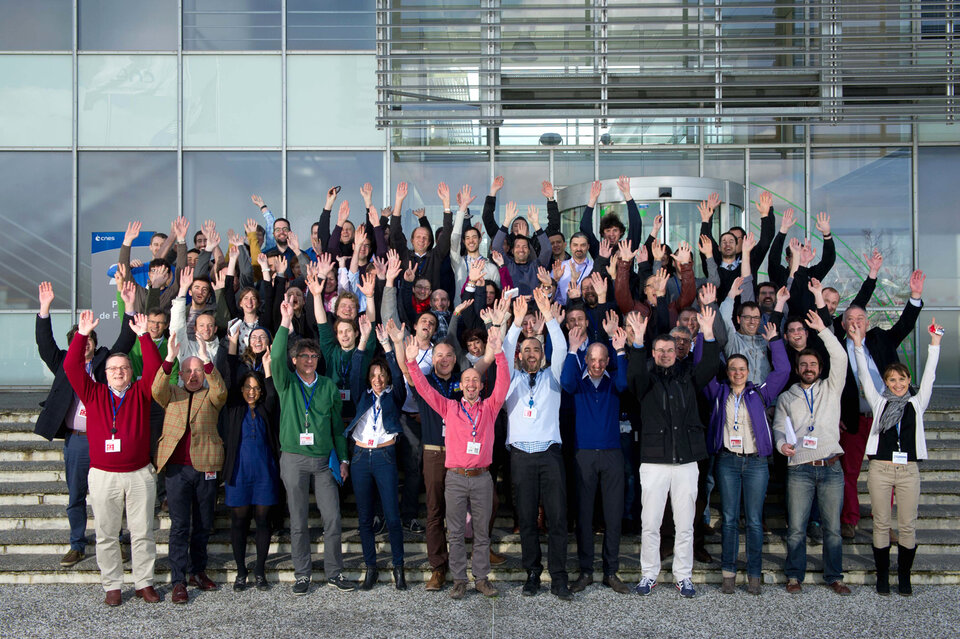
"Three orbit manoeuvres were needed for each spacecraft to put them on a drift orbit that will allow them to reach their final orbital position in about three weeks," said Hervé Côme, Galileo LEOP Flight Director for ESA.
"The final and accurate positioning of the spacecraft in their target orbital slots will require four or five additional orbit manoeuvres. These will be computed by ESA's flight dynamics team in Toulouse, whereas the actual commanding of the spacecraft will be done from the Galileo Control Centre near Munich, Germany."
Once the two satellites received a clean bill of health then control was passed to Galileo’s Oberpfaffenhofen-based Control Centre (run by SpaceOpal, a joint venture by DLR Gesellschaft für Raumfahrtanwendungen (GfR) and Telespazio) to prepare for their final In-Orbit Testing (IOT) in two phases: commissioning for the host satellite platforms, and then for their navigation and search and rescue payloads.

Platform commissioning is now taking place, while the satellites are drifting in their orbits to reach their final positions.
The Galileo satellites’ navigation and the search and rescue payloads will be switched on in few weeks and will begin detailed in-orbit testing, masterminded from ESA’s Redu centre in Belgium, which is equipped with a 20-m antenna for high-resolution acquisition of the navigation signals.
The hosting of Galileo’s LEOP team alternates between CNES in Toulouse and ESA’s ESOC control centre in Darmstadt, Germany. So the early operations of the next pair of Galileo satellites will be masterminded from ESOC – their launch is scheduled for September.


